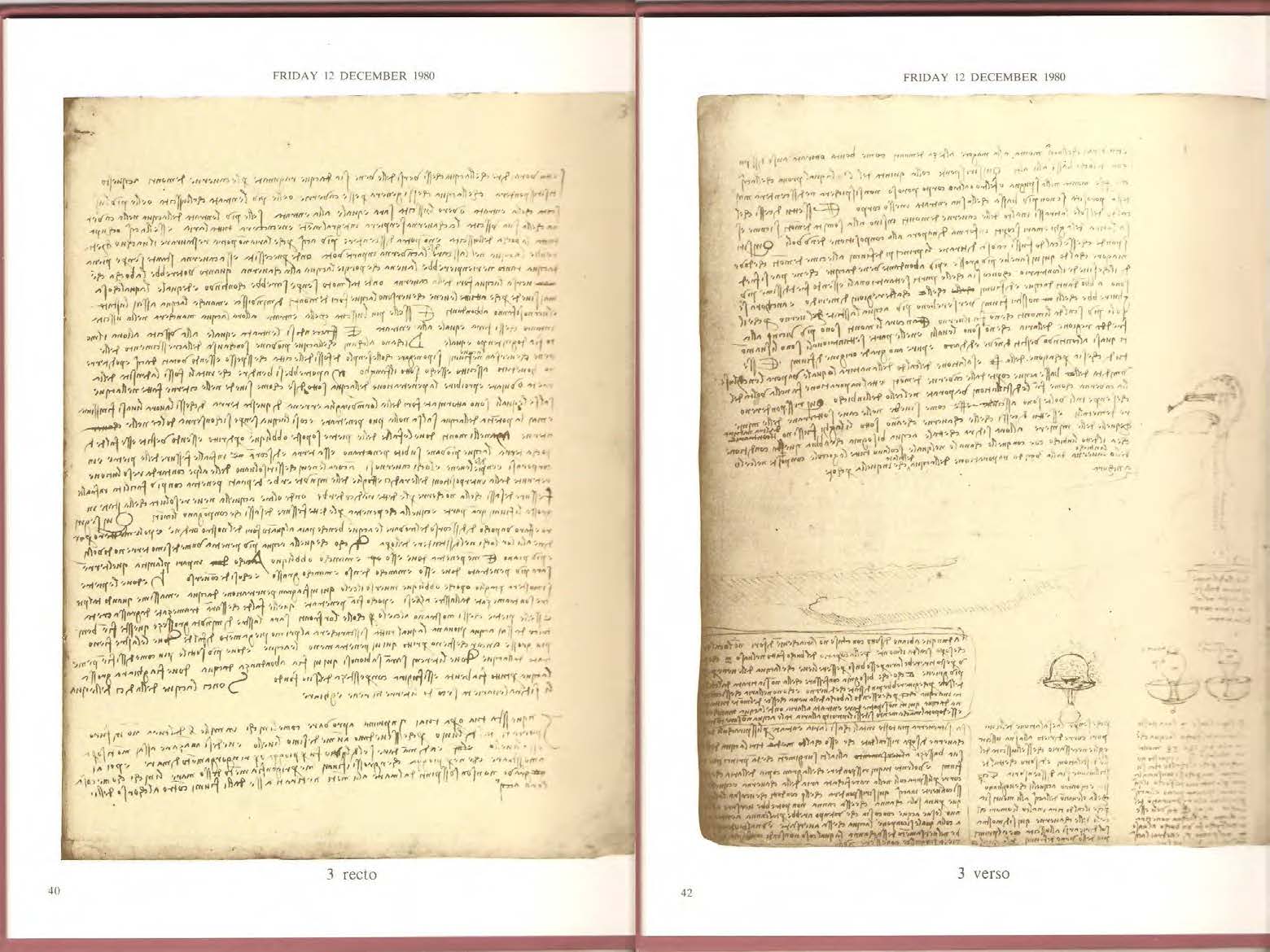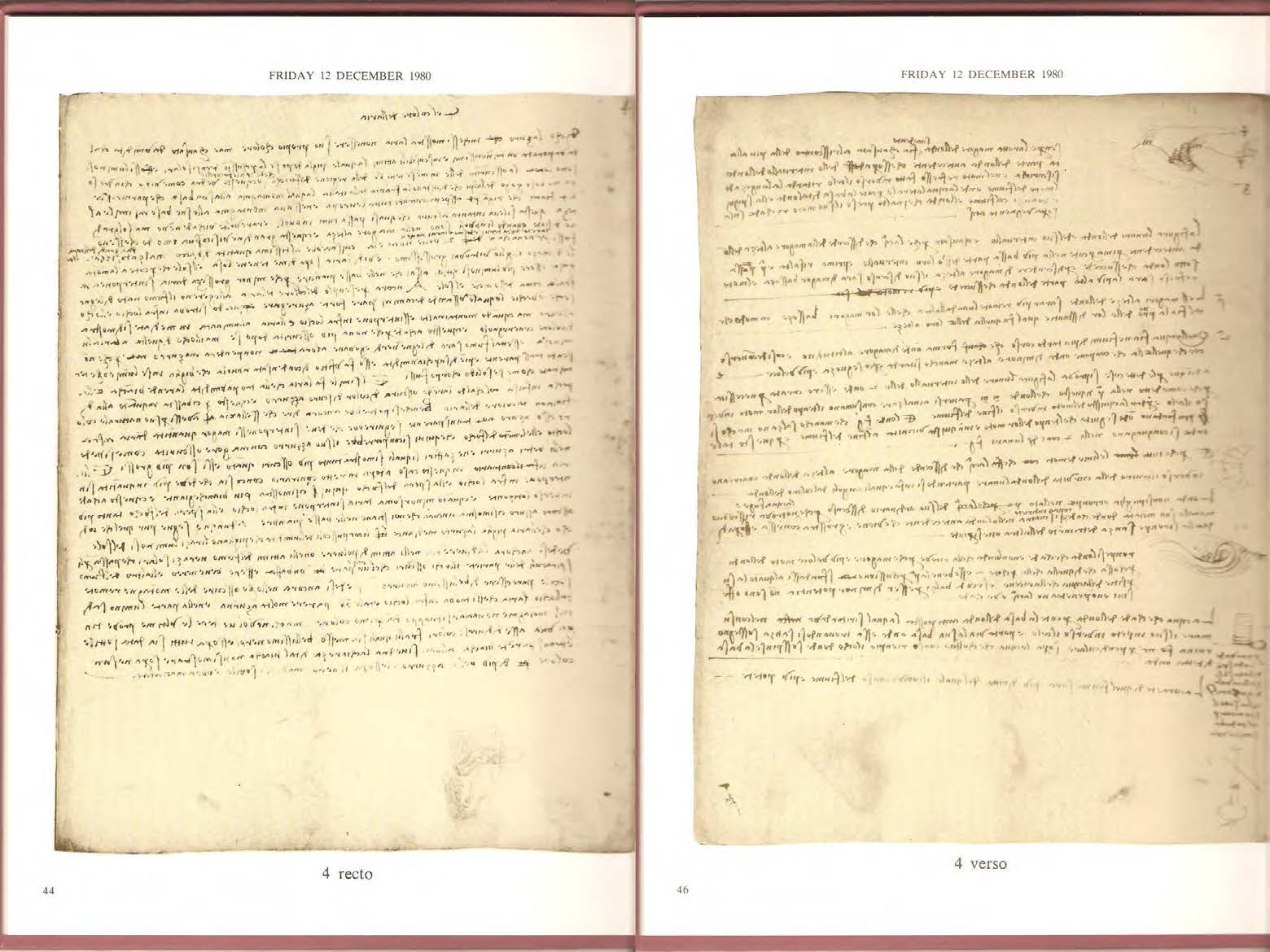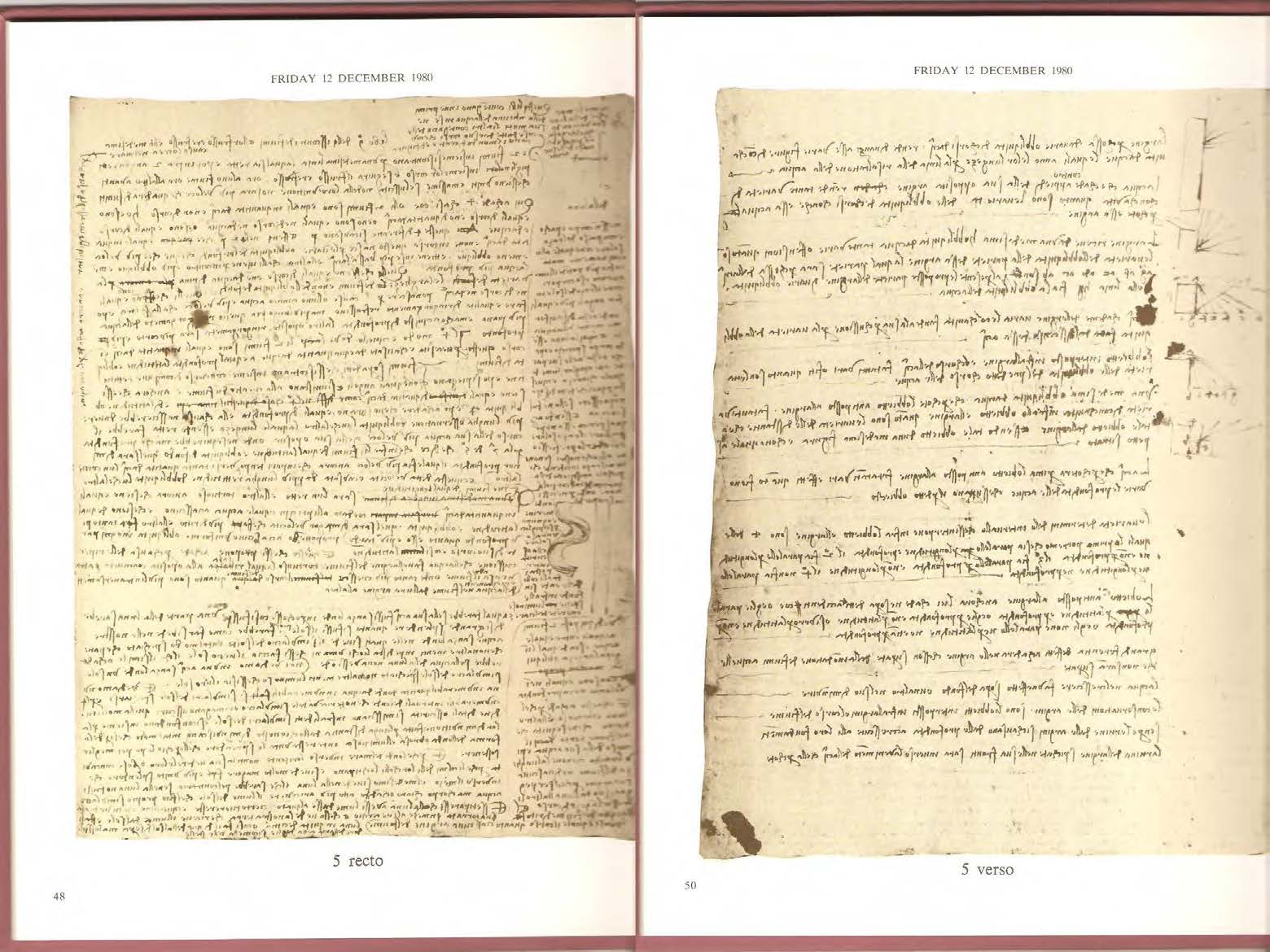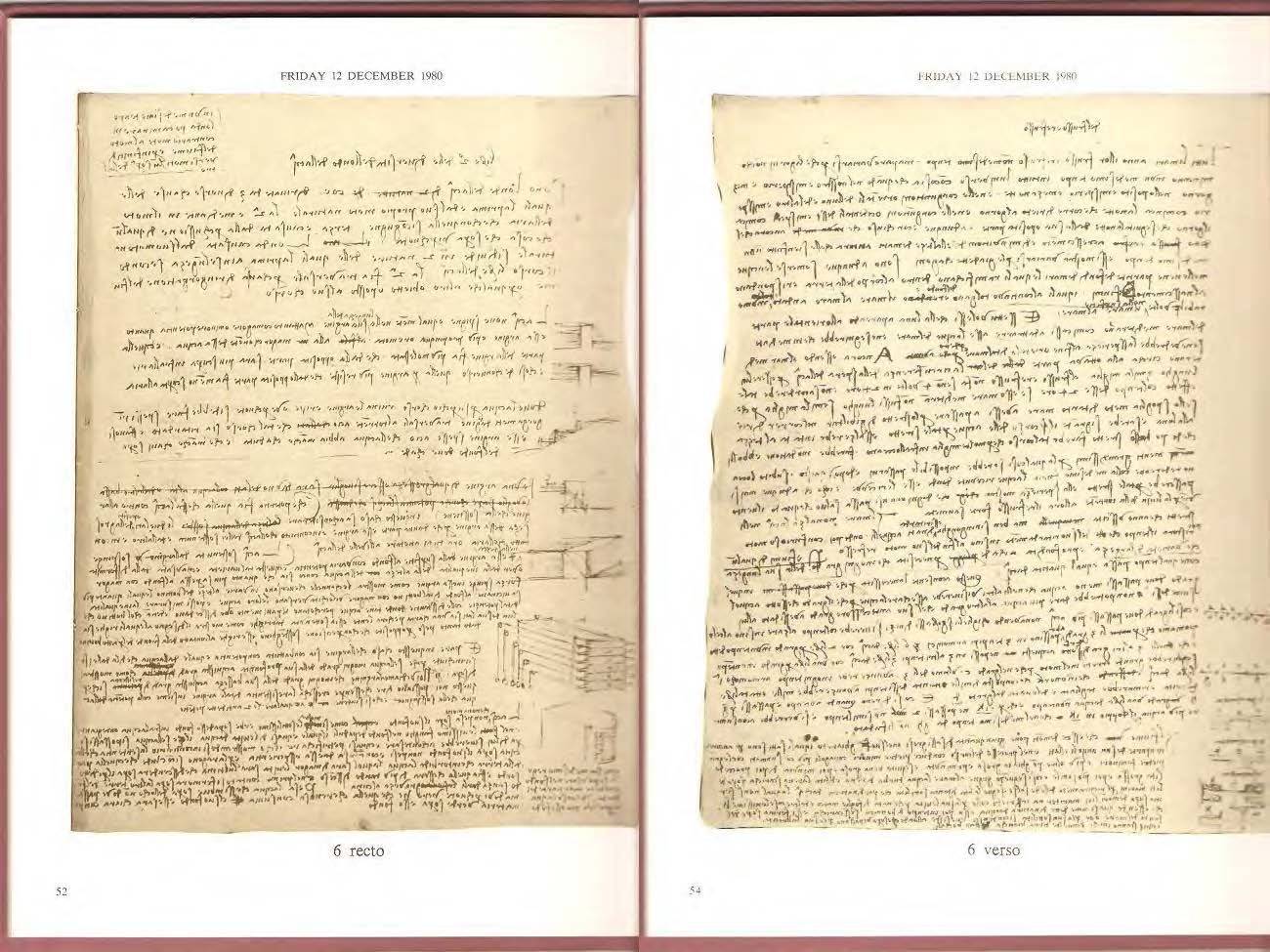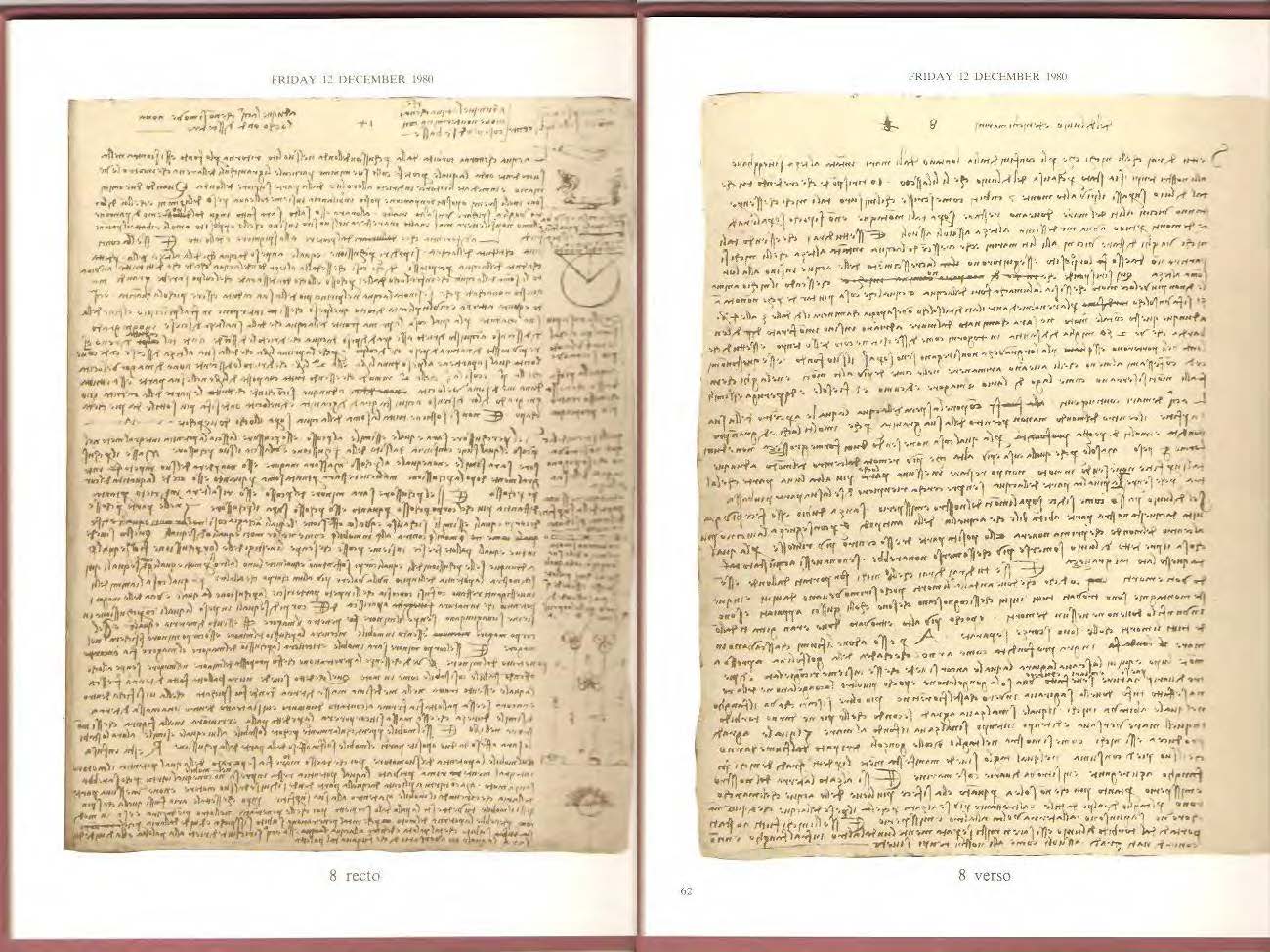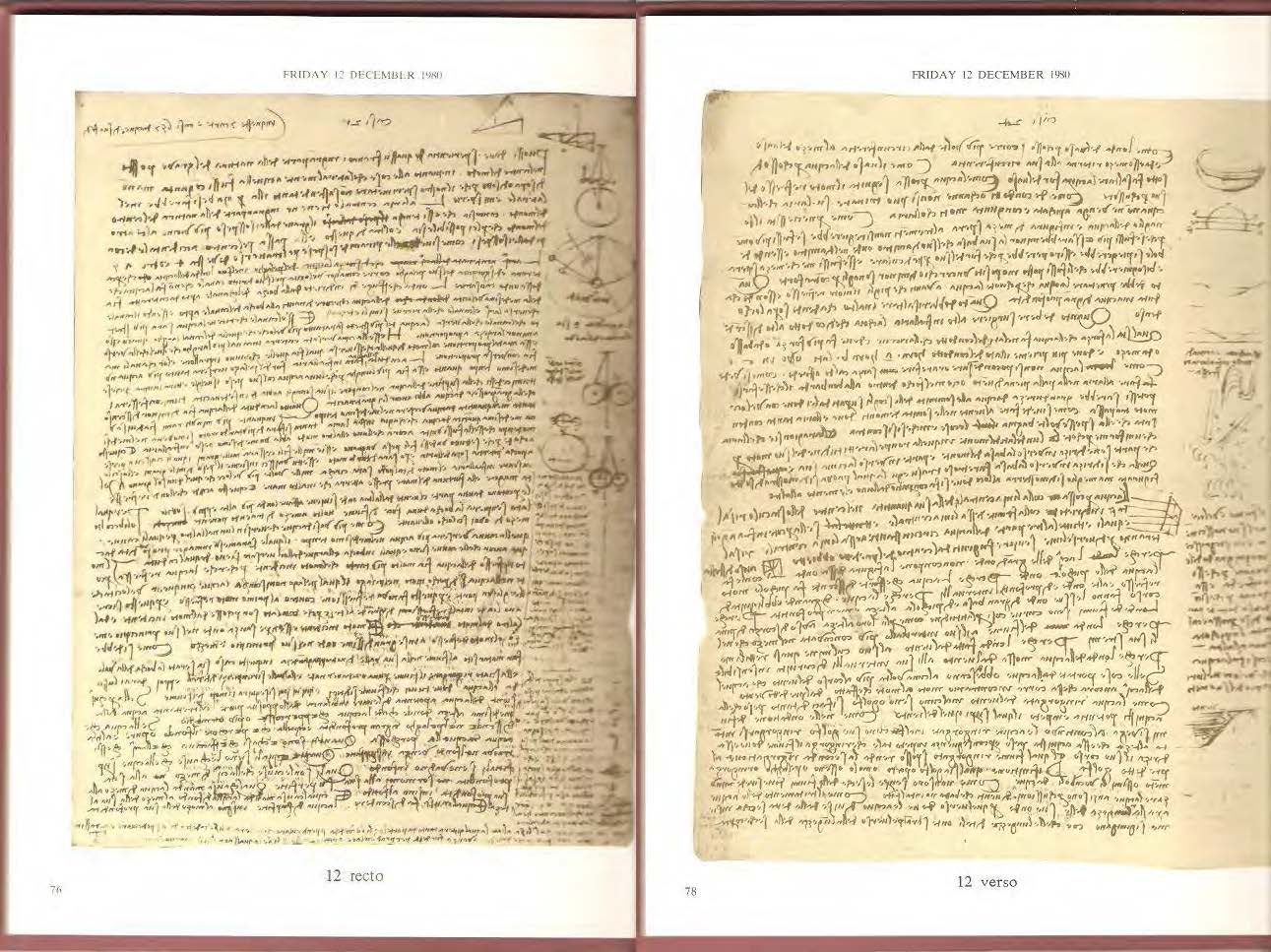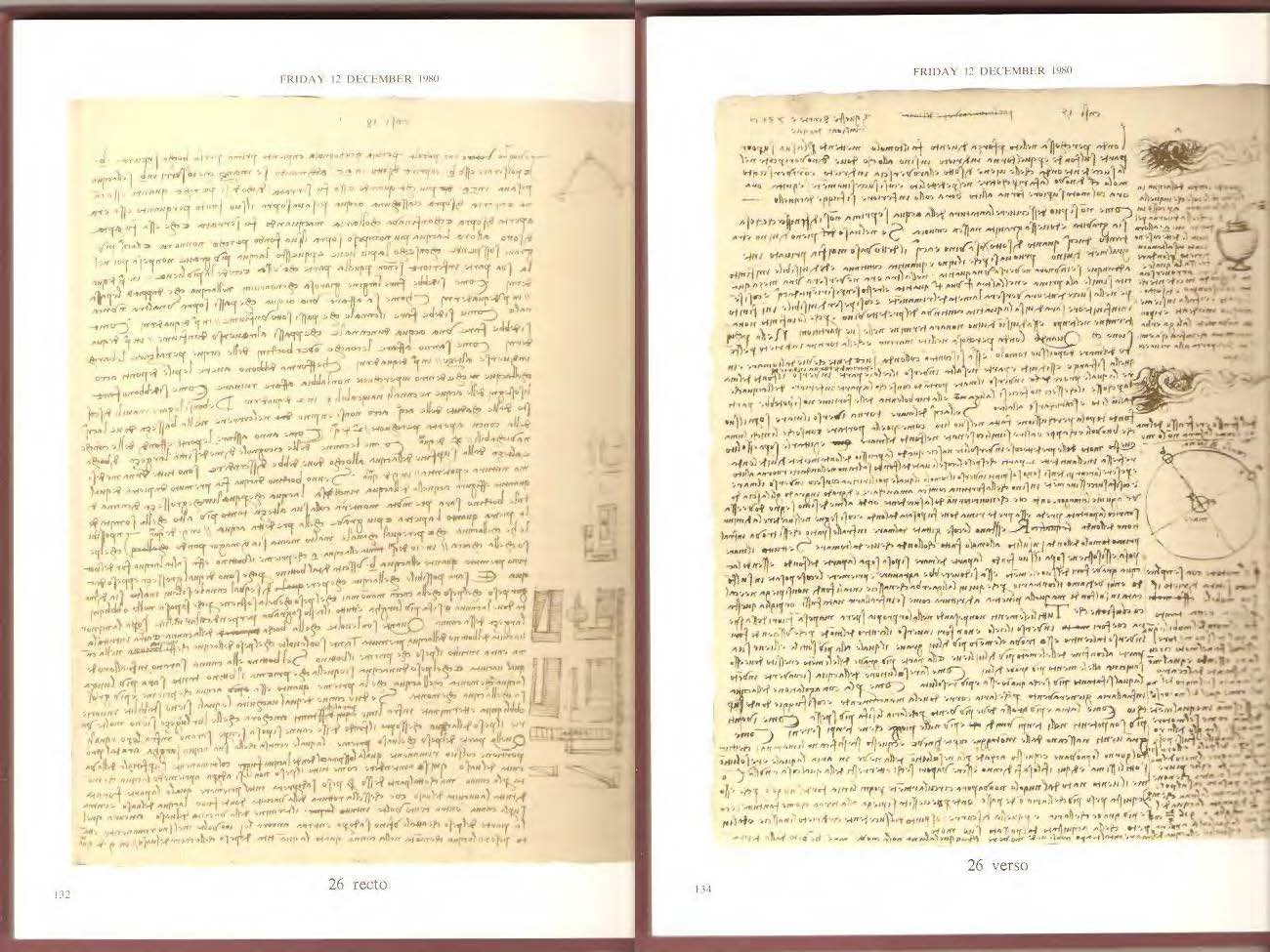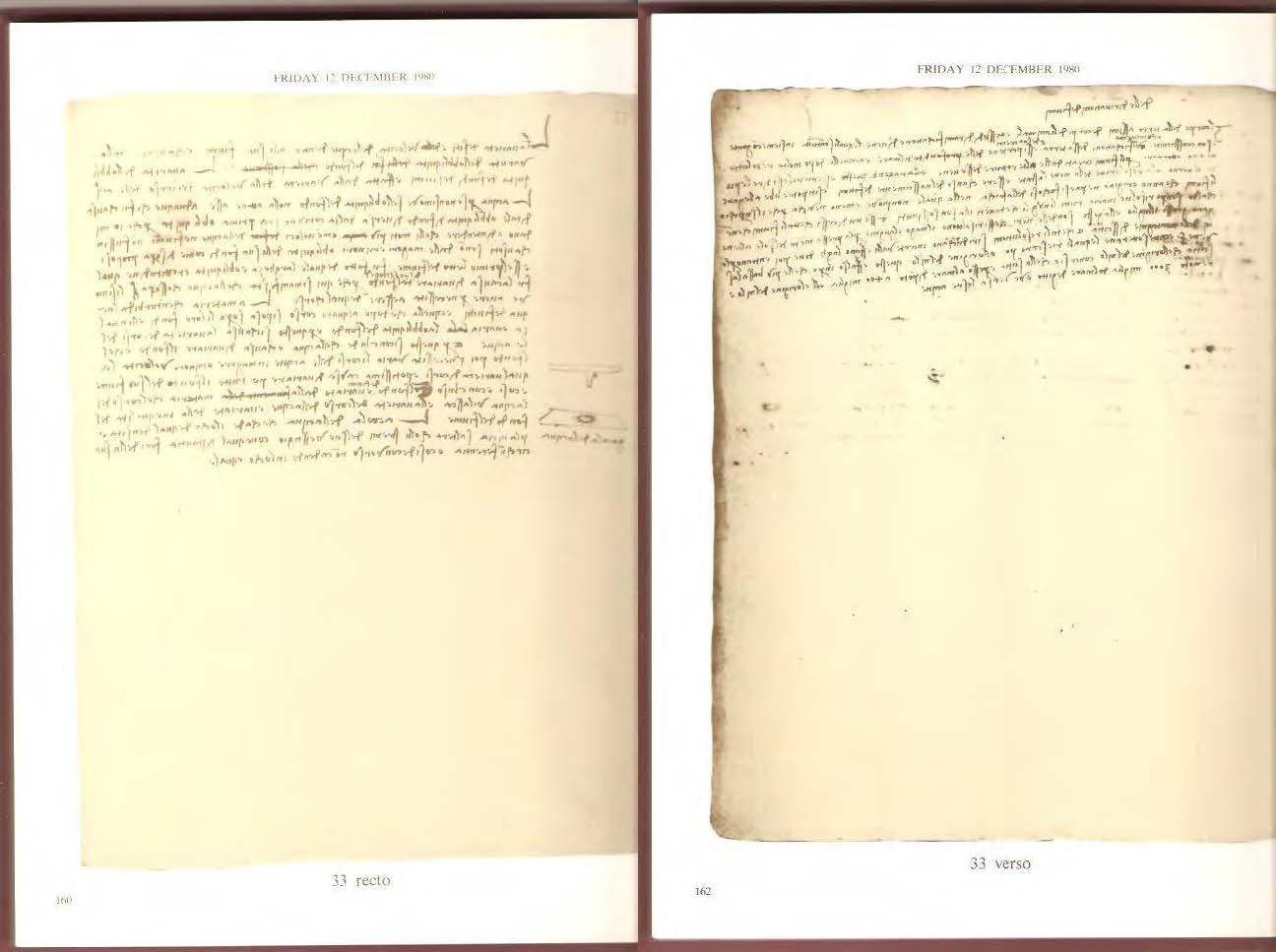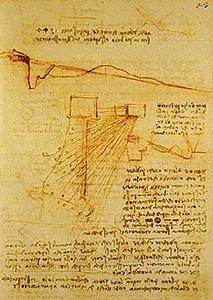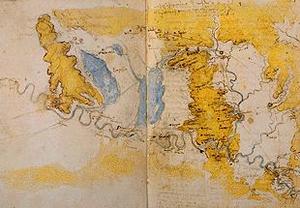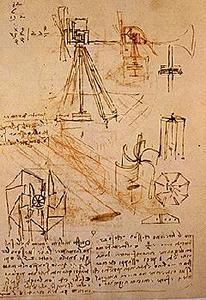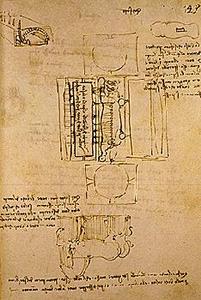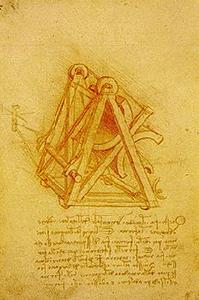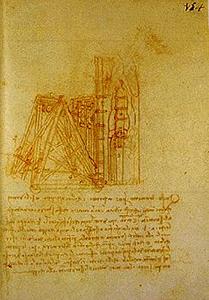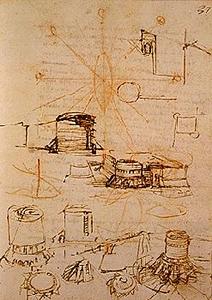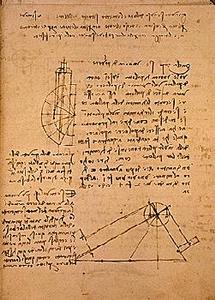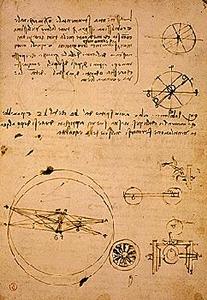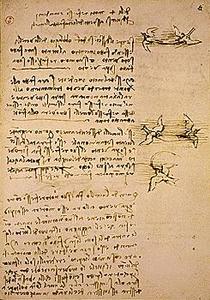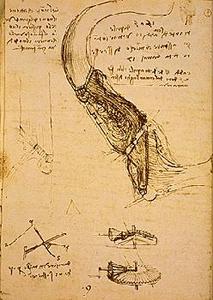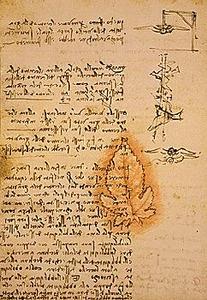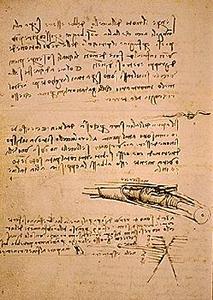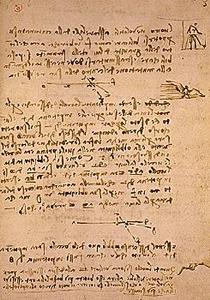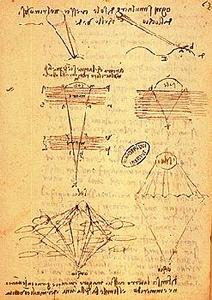
Codexes
Of all the surviving manuscripts from Leonardo there are only about 5000 - 7000 pages total. The pages are scattered, mostly randomly, throughout multiple collections that are called "Codex's" this section will be about how each came to be and what they contain.
Codexes
Royal Collection
- Source
- Royal Library,Windsor
Facsimile (Giunti, Florence 1980-85); ca. 1478-1518; 48x35 cm
"This collection was gathered by the sculptor Pompeo Leoni at the end of the sixteenth century, who included mostly Leonardo's figurative studies. It is possible to distinguish different dominant themes. The clearest is that of anatomical drawings. There is also a conspicuous group of landscape drawings, a series of studies of horses (including studies for equestrian monuments), numerous drawings of figures and caricatures, as well as a group of geographical maps."
Gallery (Coming soon)
Codex Arundel
- 1478 - 1518
- 21 x 15 cm
- 238 Sheets.
- In the British Library
- Link to view online
- Not an original order but a collection from many dismembered notebooks.
- Subjects: Mathematics, Optics, Euclidean Geometry, Physics, and architecture.
"This is not an original notebook, but a collection of sheets from various dismembered notebooks of Leonardo, to give a total of 283 folios. Researches in physics (especially mechanics) and mathematics (optics and Euclidean geometry) predominate in this collection. It also includes architectural and territorial studies, such as those conducted in France for the project of the Royal Residence of Francois I in Romorantin. "
Codex Atlanticus & Windsor Collection
- 1478-1518 created
- 65 x 44 cm
- Largest Collection of Leo's Notebooks
- 1119 Sheets
- Pompeo Leoni - Originally compiled by
- 1796 Moved to France
- 1851 - Returned to Italy
- Located in Biblioteca Ambrosiana, Milan
- Includes a little of most of Leo's studies including: Biographical records and personal notes.
"This is the largest collection of Leonardo's sheets, formed at the end of the sixteenth century by the sculptor Pompeo Leoni, who dismembered many original notebooks. In the present arrangement, after the restoration work carried out in the 1960s, the codex consists of 1119 sheets. It contains studies related to the entire range of Leonardo's interest in science and technology, together with architectural projects, town planning, biographical records and personal notes. "
"The Codex Atlanticus (Atlantic Codex) is a twelve-volume, bound set of drawings and writings by Leonardo da Vinci, the largest such set; its name indicates its atlas-like breadth. It comprises 1,119 leaves dating from 1478 to 1519, the contents covering a great variety of subjects, from flight to weaponry to musical instruments and from mathematics to botany. This codex was gathered by the sculptor Pompeo Leoni, son ofLeone Leoni, in the late 16th century, who dismembered some of Leonardo's notebooks in its formation. It is currently preserved at the Biblioteca Ambrosiana in Milan."
The folios in the Codex Atlanticus deal with various subjects ranging from mechanics to hydraulics, from studies and sketches for paintings to mathematics and astronomy, from philosophical meditations to fables, all the way to curious inventions such as parachutes, war machineries and hydraulic pumps.[1]
The codex was restored and rebound by the Basilian monks working in the Laboratory for the Restoration of Ancient Books and Manuscripts of the Exarchic Greek Abbey of St. Mary of Grottaferrata from 1968 to 1972.[2]
In April 2006, Carmen Bambach of the Metropolitan Museum of Art in New York City discovered an extensive invasion of molds of various colors, including black, red, and purple, along with swelling of pages.[3][4] Monsignor Gianfranco Ravasi, then the head of the Ambrosian Library, now head of the Pontifical Council for Culture at the Vatican, alerted the Italian conservation institute, the Opificio delle Pietre Dure, in Florence. In October 2008, it was determined that the colors found on the pages weren't the product of mold, but instead caused by mercury salts added to protect the Codex from mold.[5] Moreover, the staining appears to be not on the codex but on later cartonage.[6]
Codex Leicester
- 1504-1510
- Bought by Bill Gates in 1995 for 30 Million.
- It is only 72 pages.
(Gates Collection, Seattle, WA)
Facsimile (Giunti, Florence 1987); ca. 1506-10; 29x22 cm
"This 36-folio manuscript has changed hands twice in the last fifteen years. In 1980, it was purchased at auction by Armand Hammer from the estate of Lord Leicester; in 1994, it was acquired by Bill Gates at the Hammer estate auction. The analysis of movement of the water is a central theme, together with studies of geology (fossils, the circulation of water and natural disasters) and astronomy."
Madrid Codices 1 & 2
- Biblioteca Nacional, Madrid
- 1966 - Found by chance
- 21 x 15cm
- 192 pages divided into two parts:
- Part 1: Sketches and notes on Elementary Mechanisms
- Part 2: Notes on Theoretical Mechanics
- 157 pages - Notes on Military Architecture, maps, and studies of optics and painting.
- 1491-1493 - attached pages about casting of the Sforza Horse
- Two on Mechanics created in 1490-1496
- Geometry 1503-1505
Madrid Codices 1
"Facsimile (Giunti, Florence 1974); ca. 1490-99; 21x15 cm
This is one of the manuscripts whose recovery in 1966 caused a sensation. The manuscript, composed of 192 leaves, is divided into two parts. The first part contains drawings and notes relating to a series of elementary mechanisms. The second (the first in chronological order of compilation) contains research on theoretical mechanics. This is the most accurately paginated of Leonardo's manuscripts that has survived."
Madrid Codices 2
"Facsimile (Giunti, Florence 1974); ca. 1503-05; 21x15 cm
Rediscovered in 1966, this 157-leaf manuscript contains studies related to Leonardo's activity in Florence, after the end of his first stay in Milan. It includes plans for military architecture carried out for the Seigneur of Piombino, maps of the Tuscan region, notes on painting and studies of optics. The final booklet, arbitrarily attached to the manuscript, contains Leonardo's studies carried out between 1491 and 1493 for the casting of the equestrian monument to Francesco Sforza."
Codex Trivulzianus
- Biblioteca Trivulziana
- Sforza Castle, Milan
- 55 Sheets
- 1487-1490
- 20.5 x 14 cm
- Used to be 62 sheets, now only 55 remain.
- "It documents Leonardo's attempts to improve his modest literary education, through long lists of learned words copied from authoritative lexical and grammatical sources. The manuscript also contains studies of military and religious architecture."
On the Flights of Birds
- Biblioteca Reale, Turin
- 1505
- 17 pages remain of an original 18
- 21 x 15 cm
Facsimile (Giunti, Florence 1976); ca. 1505; 21x15 cm
"This codex was originally composed of 18 leaves, but only 17 remain today. The analysis of the flight of birds involves here the application of rigorous mechanical methods. The function of the wing is compared to the wedge, that of the tail to the rudder, while the laws of equilibrium account for the way in which the bird-machine balances in the air. Leonardo also studied air-resistance, currents and winds. "
Forster Ms. I
"This manuscript is composed of two different booklets, totaling 101 sheets. In the first manuscript (1487-1490) there are studies of stereometry, i.e. the transformation of bodies into different shapes of equal volume. These studies display Leonardo's intense training in Euclidean geometry under the guidance of Luca Pacioli. Hydraulic studies predominate in the second manuscript (1505)."
- Victoria and Albert Museum, London
- Facsimile (Giunti, Florence 1992); ca. 1487-90 and 1505; 14.5x10 cm
Forster Ms. II
- Victoria and Albert Museum, London
- Facsimile (Giunti, Florence 1992); ca. 1495-97; 9.5x7 cm
"This manuscript is composed of two booklets totaling 159 leaves. The first (1497) presents studies of mechanics, ornamental knots and plaits and of architecture. The second (1495) records Leonardo's research in physics and mechanics (force, gravity, weight and movement)."
Forster Ms. III
- Victoria and Albert Museum, London
Facsimile (Giunti, Florence 1992); ca. 1493-96; 9x6 cm
"This manuscript, made up of 94 leaves, has the appearance of a notebook for pencil sketches and occasional notes. There is a remarkable variety of themes: fables and parables, technical recipes, studies for the Sforza monument, town-plans, etc. Leonardo uses a red pencil very frequently in this codex."
LEONARDO DA VINCI - Ms. F
.....................
Facsimile (Giunti, Florence 1988); ca. 1508; 14.5x10,5 cm
This manuscript, which has remained intact, is made up of 96 leaves. It is largely devoted to studies of water. Leonardo sketches vortices and waves. He also studies the reflection of the Sun and Moon on the surface of the sea, as part of a series of investigations into optics and light. Other topics studied are geology and geometry.










